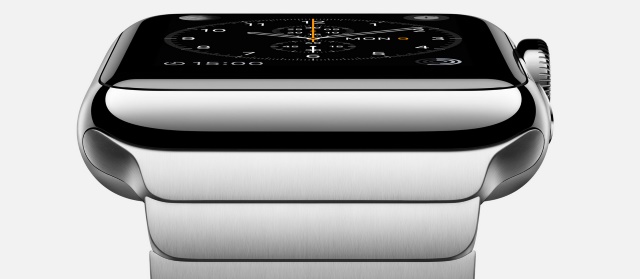Developing apps for Apple Watch was like 'walking in the dark'

The Apple Watch was announced just a couple of days ago, and the focus has been very much on the hardware so far. But battery life and the amount of storage aside, this is an Apple product, and that means apps are central to its success. Just like the iPhone and iPad, the Apple Watch is a platform on which developers can work their magic.
One such developer is Christoph Burgdorfer, the man behind -- amongst other things -- WhereAreYou App (Locate a friend), a free app that does very much what it says on the tin. It started life as an iPhone and Android app, but the emergence of Apple Watch opens up another possibility. I caught up with Christoph to chat about what it was like to develop for an unreleased product, and whether Apple got it right with the Apple Watch.
I thought I would start off by asking Christoph about the privacy concerns surrounding an app that can be used to check on someone else's whereabouts. He says that there are two keys things to keep in mind. Firstly, location is determined via SMS, and secondly the fact that any location request has to be approved. He says "this is why we consider this the ONLY safe location sharing application. Tracking is technically not possible". It's something which it is thought delivery companies, car recovery services and friends meeting up could use.
But onto the Apple Watch specifically.
BN: What was it like developing for the Apple Watch before the product is available?
CB: It's actually quite tricky because you feel like like walking in the dark since we had no means of testing it on real devices. But this is common with new device families. The first iteration involves a lot of guess-work; we had to work blindly and test with the emulators. Once the hardware is out however, you can build on beta software for follow-up releases.
BN: Is battery life a consideration for developers? There has been some disappointment that it wasn’t longer.
CB: Many of the main functionalities are actually handled by the phone. At least initially the Apple Watch is merely acting as an 'additional screen' for third party iPhone apps. Battery saving measures have been built into that framework. Since our application is pretty straight forward, we didn't have to worry too much about that.
BN: Do you think Apple Watch will fare better than Android wearables or smartwatches from other manufacturers like Basis and Pebble?
CB: The problem with Android is that it is too fragmented. Too many manufacturers and software development companies have their interests in the platform and try to build their 'exclusive' features making it really hard to get to a common denominator. Apple on the other hand has the full chain from computer to wearable within one fully controlled ecosystem. This makes it far easier to develop and innovate on something that works 'for the full chain' and 'for all devices'.
With Android it's really difficult to manage everyone's expectations because what works on a Nexus may not work on a Motorola.
BN: How do you feel about the future of Apple Watch? What is its unique selling point?
CB: People use a variety of different screen for different things -- a monitor for working, TV for entertainment, mobile for consuming content on the move. The only thing that was missing is the screen for everyday interruptive 2-3 second "glances". Now Apple has closed that gap.
BN: What other sorts of apps do you envision being particularly popular?
CB: We have to think of the user's habits. What are applications where a 2-3 second glance is going to be useful or the user has to be interrupted in a timely fashion? The following apps come to my mind: how many minutes until the next bus/train comes, 'hypertimely' horoscopes, stock price alerts, IFTTT, anything time critical such as alarm systems, alerts if people are nearby, and reminders.
I don't believe that people will use the watch like Knight Rider with Siri, use it to create content or look at Instagram feeds. It's just not convenient.
BN: Do you think that Apple was a little too reserved with the product it put out -- were you disappointed with the final product?
CB: When you introduce a new device family, you have to take baby steps in the beginning. Firstly you want to iterate it according to the needs of the consumers, secondly you don't want to blow all your powder on the first shot. And thirdly, you can't give away all the secrets of your strategy away upon launch as it would give your competitors more chances to catch up. Therefore from the perspective of the PR-Effect and product development strategy, in my mind, Apple has done the right thing.
